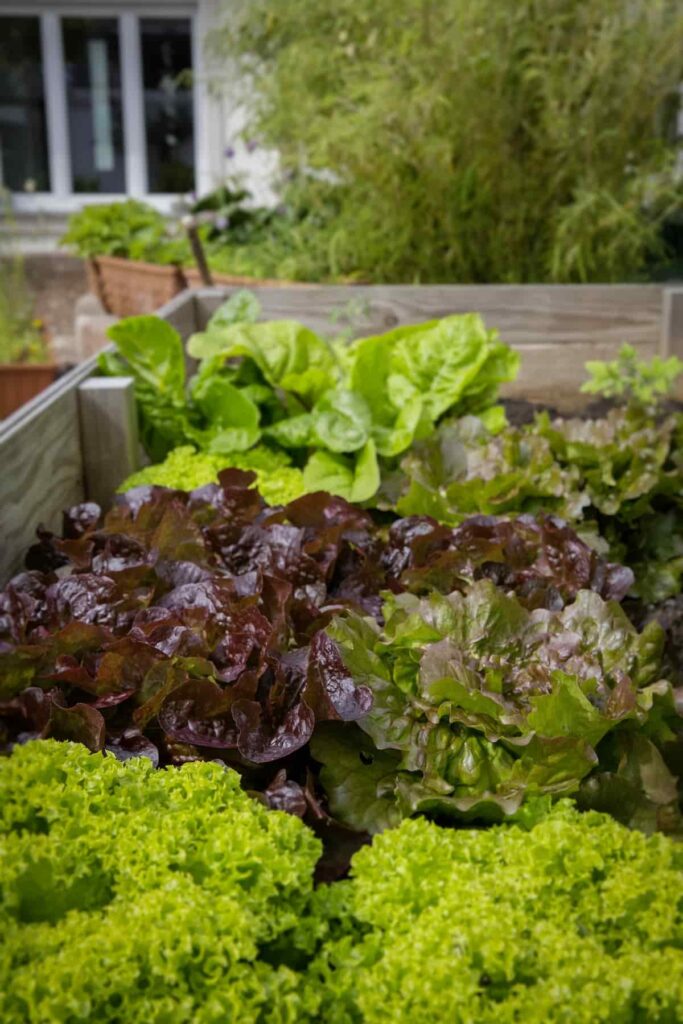Raised beds are usually freestanding, with no bottom or top, and are positioned in a sunny spot filled with good-quality soil. The soil nutrients beneath raised beds are usually accessible to the roots of the plants. Thanks to an open bottom. Raised beds can be built without frames by mounding the soil 6-8 inches high and flattening the top. No additional materials are required for this type of raised bed.
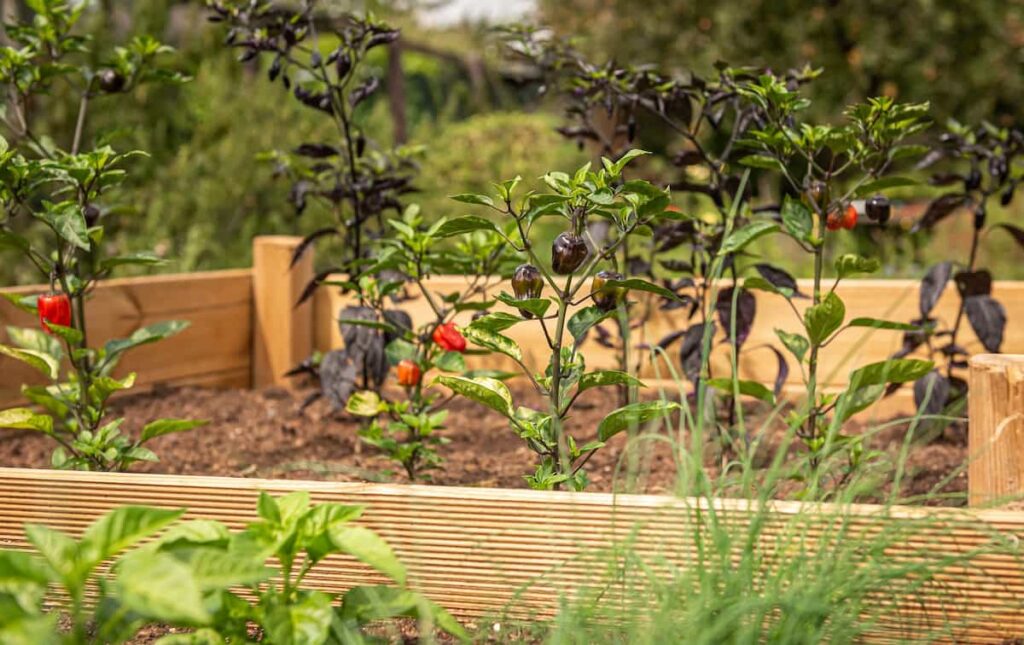
In addition to giving better control over soil conditions and allowing for quick and easy harvesting, raised bed gardens are one of the productive ways to grow plants. There are many ways to design raised beds, depending on the needs and the overall aesthetic you want to achieve. The information below will give an idea to decide what type of raised bed you want for your garden.
How to build Raised bed garden from scratch
Different types of Raised garden beds
Compared to ground-level gardens, raised beds to have better soil structure and drainage. Warming up the soil in the season will help you start gardening in the spring. Raised ground beds and supported and containerized raised beds are the types of raised beds.
Raised ground beds
It is a flat-topped mound, usually six to eight inches high, that is the simplest form of the Raised bed. Other than soil, they require no additional materials. Dig three to four inches of soil from paths between beds or add additional soil to form the beds. Be careful not to bring in soil from areas where lead and pesticides are present or where soil-borne pathogens are present.
Supported Raised beds
Raised beds create an important barrier between the garden and the lawn, a major source of perennial weeds. A neat, finished look is achieved by using wood, stone, brick, or plastic frames. Leaving a four-inch border of bare or mulched soil around the bed makes mowing easier. Be aware that some edging materials only permit angular corners when selecting the shape and size of a supported raised bed. Rake the soil into shape before placing the frame around the bed. Prepare the soil as before, but place the frame around the bed before raking it.
Containerized raised beds
The walls of a raised bed should be between 10 and 12 inches high in high-traffic areas near sidewalks. Plants can be stressed by reflected heat from paved surfaces, so raising beds can reduce that stress. In addition, adding higher walls to raised beds maximizes accessibility and reduces maintenance requirements. It is recommended that wheelchair users work at 27 inches, but the beds can be customized to any height.
Steps in building a raised bed
A. Pick the perfect spot
Sites with lots of sunlight are ideal for raised beds. Here are the requirements:
- It is recommended that vegetables receive six to eight hours of direct sunlight a day, especially after lunchtime.
- It is important that the ground be level and even in the chosen area.
- Garden beds should not be built in windy or frosty locations.
- Avoid wet or marshy areas since soil needs to drain well.
B. Choose the material for raised bed
For edging raised beds, choose a readily available material at home. Avoid painted or pressure-treated wood that can leach chemicals or lead into the soil. If you have enough bricks, you can stand them on end to make higher sides for your bed by placing them around the edges. The bottom should be buried to prevent weeds from spreading under and between the bricks. For sloped raised beds, acquire roofing slates and use them as edging. As a final option, cement blocks can provide a surface for heat-loving plants. The following are some possibilities:
In case you missed it: How to Start Home Gardening in Asia: For Indoors, Outdoors, Raised Beds, Backyards, Terrace, Pots, and In Containers for Beginners
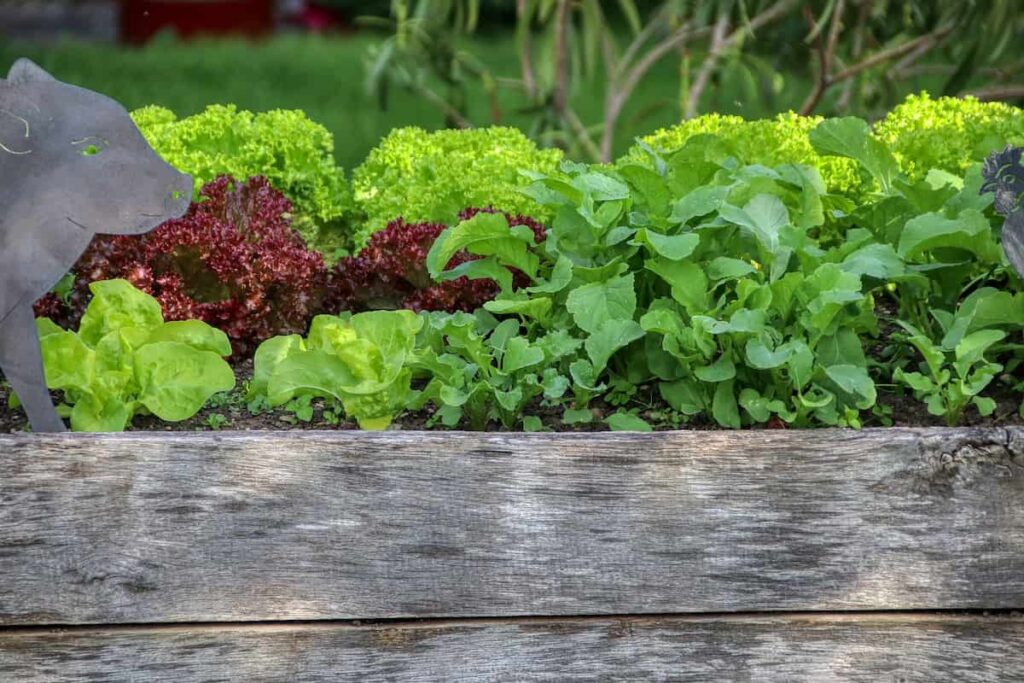
I. Stacked stone
Some gardeners prefer stone beds because they require less maintenance. Others choose a stone because they like the way it looks. There is only one downside to stone: its upfront cost is typically higher.
II. Recycled redwood
Among the plants planted in these eco-friendly raised beds are eggplants, squashes, tomatoes, and herbs. This planter is made from redwood, which resists rot better than most wood types. It has held up so well in this application that it has been given a second chance.
III. Woven wattle
There is nothing ordinary about these raised beds. Instead, their circular shape makes them stand out from the norm. A second characteristic is that they are made of twigs woven together into a basket-like shape. Finally, handmade tepee trellises provide vertical support for climbers.
IV. Redwood Box
You can grow vegetables on your deck or patio using a redwood planter box. Self-contained planters, like raised beds, provide better soil control, easier harvesting, and are portable.
V. Concrete or brick
Bricks or concrete can be used. After installing concrete, you may have to amend the soil over time, as it will increase soil pH.
VI. Cinder block
A Mediterranean-type herb like rosemary or lavender takes advantage of the extra heat gathered from concrete. Herbs or strawberries can be planted in their holes when they are filled with soil mixed with soil.
C. Determine Raised bed size and layout
- Ideally, garden beds should be no wider than 4 feet so that the center of the bed can be accessed without stepping into it. Fortunately, lumber is usually cut in increments of four feet.
- It is ideal to have a depth between 12 and 24 inches. The depth of the soil itself is very important, as it determines how much soil depth the crop requires below ground. For example:
- Crops with deep roots, such as carrots, parsnips, potatoes, tomatoes, and squash, require a minimum soil depth of 12 to 24 inches. A plant’s roots will not be able to access nutrients if there is no loose soil to this depth.
- Six inches of soil depth is required for shallow-rooted crops such as lettuce, greens, and onions.
- For wheelbarrow access, leave a minimum 18-inch path between beds.
- It is not necessary to worry about the length of the raised bed. There is no limit to how long it can be. However, it is easier to make several shorter beds than one long one. Additionally, many crop families do best in separate beds.
In case you missed it: How to Grow Moringa Tree from Seeds in Backyard: Planting and Care in Winter
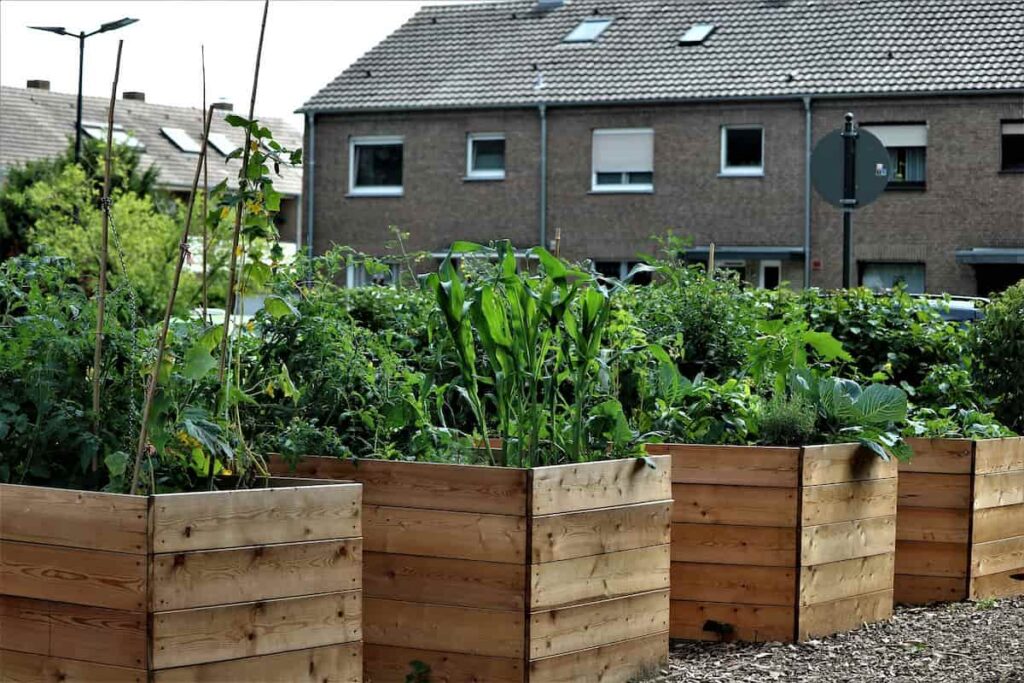
D. Build raised beds
The corners of wooden beds can be easily secured with galvanized screws, corner posts may be used, or planter wall blocks may be used. With or without cement mixtures, stone or block beds can be installed.
- The wooden pieces should be cut to the desired length. Once you have decided on the dimensions of your raised planting bed, you will need to cut four planks of wood that are the same length as the raised bed’s sides. You can choose boards wide enough to reach the desired height if it is not comfortable to build up the walls with wood.
- Outline the raised bed frame where you want to build it. There are two ways to do this:
- Make grooves in the turf along the outer edges of the planting bed using a shovel or spade.
- You can also mark the corners with stakes and run string or twine between them to define the bed’s edges.
- The turf inside the planter should be removed. Grass should be removed from all areas marked off with a spade. Water the area, lightly three or four days in advance for softer soil.
- Prepare the soil underneath the turf that has been removed by loosening it. Use a garden fork to break up the soil inside the planter’s outlines. Loosening it will be easier to work with and less compact. Make sure you dig down at least six to eight inches.
- Four wooden stakes should be placed at the inner corners of the marked area to support the walls of the planter. Next, drive heavy wooden stakes into the four inside corners of the marked area. Ensure the stakes are long enough to reach the top of the planter walls after driving them in.
- Dig a trench 1–2 inches deep along the planter’s edges. Planters should have walls extending slightly below the ground’s surface to add stability. A spade or trenching shovel should be used to dig down 1–2 inches along the edges, and some gravel should be poured into the trench bottom to improve drainage.
- Stakes should be attached to the boards with nails or screws, and the boards should be placed in the trench along the planter’s edge. The stakes should be attached with galvanized nails or screws.
E. Line the bottom of Raised beds
Raised beds can be protected from weeds and grass by corrugated cardboard or newspaper. In addition, line the planter with hardware cloth to prevent pests from entering. Put a layer of 1/2 inch or 1/4 inch hardware cloth on the bottom of the bed if you are worried about gophers, voles, or other burrowing pests. A staple gun can be used to attach it to the bottoms of the walls. In addition to keeping out pests, the hardware cloth allows good drainage and rooting.
F. Fill the Raised beds with soil
A nutrient-rich soil mix should be used to fill the garden bed. Providing plenty of high-quality soil for a raised garden to flourish is essential. Keep your plants healthy and happy using compost, topsoil, manure, or other organic fertilizer. The soil and fertilizer will differ depending on the type of plants to be grown in the planter. For example, 1 part topsoil, 1 part composted manure, and 1 part sand makes a great recipe for raised beds. A bagged soil can also be used.
G. Planting on the Raised beds
The garden bed is the perfect place to plant your favorite plants. Soft dirt makes digging easy. Raised planters are usually used for growing vegetables, but they can be used for anything. Plants can be grown in raised beds, such as tomatoes or carrots, or flowers or decorative grasses, can be grown in raised beds. Raised beds work well with tall plants, such as tomatoes, cucumber vines, pole beans, or tall flowers, such as foxgloves. Stakes or trellises are needed to support these plants. Rotate your crops every year if you have more than one bed.
In case you missed it: How to Grow Cantaloupe Faster: Best Tips to increase Flowering, Fruiting, and Production Yield
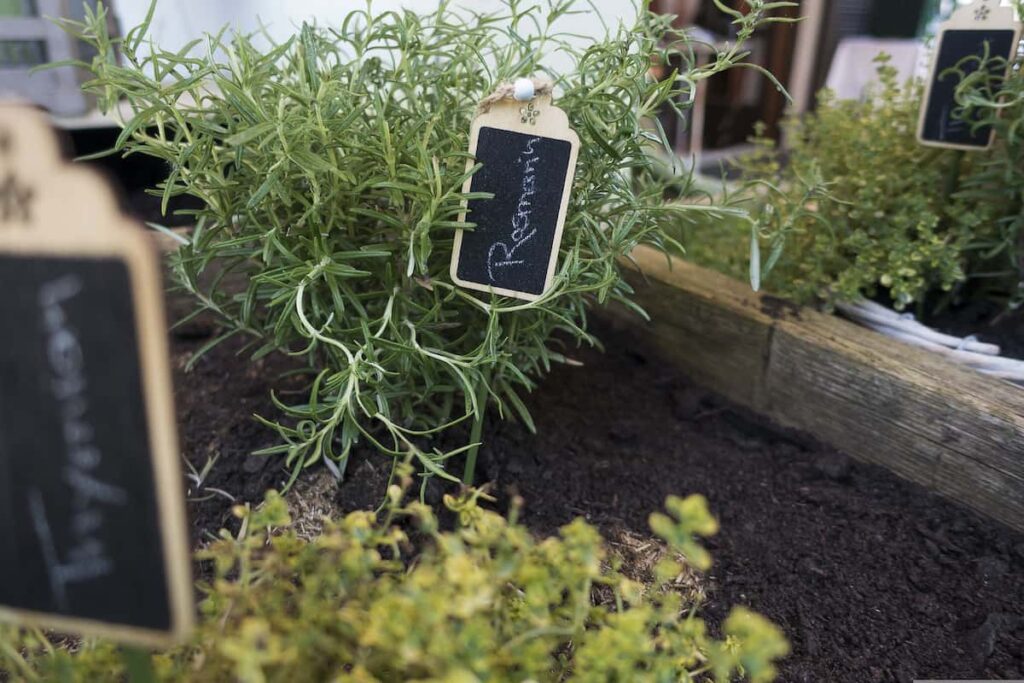
How do you water on Raised beds
Watering the plants should be done when the soil feels dry. It should feel slightly moist, like a wrung-out towel. The soil in the Raised bed should not be too dry or too wet for vegetables, so find the right balance. Try to water the plants growing in the Raised bed in the morning so the soil can dry out all day.
Hand watering
Even though watering raised beds by hand can be time-consuming, many gardeners enjoy spending time in their gardens and checking on their plants during this time. Moreover, some people prefer using a watering can since they don’t have to worry about kinks and plant damage. However, watering cans are heavy, and you may have to make many trips back to the water source. Watering wands attached to hoses are a great alternative for quickly and easily watering all the plants in raised beds.
Automatic irrigation
If you don’t have the time to water your raised beds daily, soaker hoses or drip irrigation are good options. Soaker hoses can be laid throughout raised beds to provide consistent water to all plants. With drip irrigation, water is supplied directly to the roots of each plant through small emitters.
What do you put in the raised garden bed bottom
Straw, grass clippings, wood chips, and leaves can be used to fill the bottom of a raised garden bed. Quickly breaking down will build up the soil’s organic content. However, as they decompose, they will lose height, and signs of soil level drop by the end of the season can be observed. However, if you’ve never raised a bed before, it may be a good idea to start one now.
First, put a few bricks or pegs on this organic layer and weigh it down with cardboard or another weed barrier material. Also, old, dry wood can make a suitable base layer since it will decompose beneath the soil. As well as retaining some moisture, wood drains excess moisture easily. Remember that decomposing old branches or small logs will take a couple of years. Plant shallow-rooted plants instead of deep-rooted vegetables in wood-filled beds for a while.
It will be necessary to drain excess moisture from whatever lies beneath the surface since you’re putting the best soil on top. Materials like rocks should not be used on the bottom of the raised bed, as this will create an artificial water table and prevent good drainage. It is essential to have drainage in raised garden beds.
In case you missed it: How to Grow Watermelon Faster: Best Tips to increase Flowering, Fruiting, and Production Yield
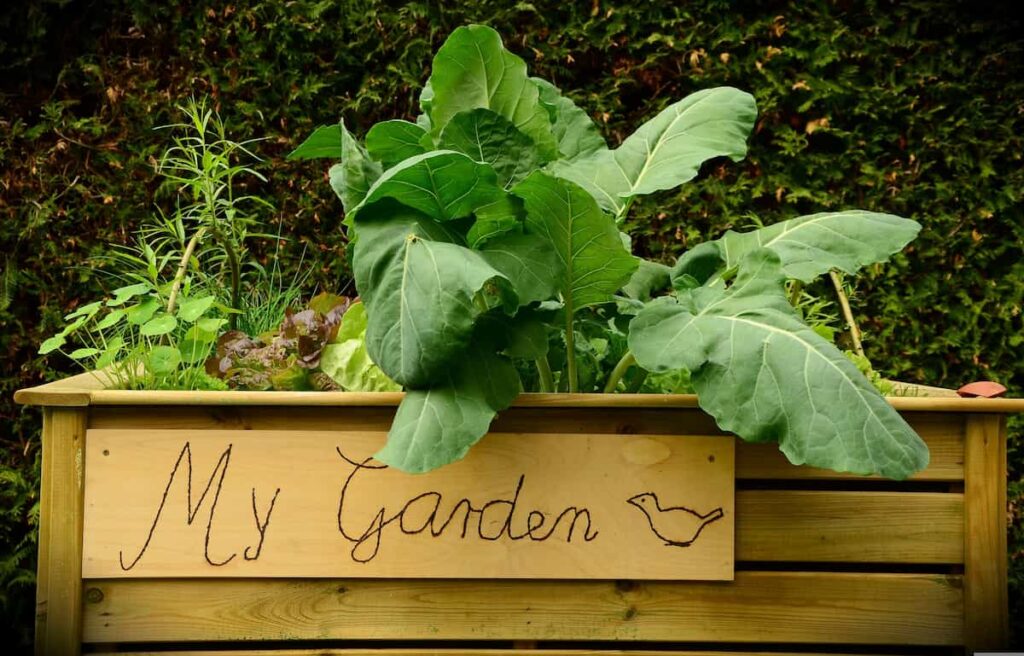
Benefits of Raised garden beds
- Drainage is good, and they prevent soil erosion.
- Since the raised soil above the ground warms up more quickly, they give a longer growing season.
- Having raised beds allows you to plant more intensively, and plants grown together in raised beds mature more quickly.
- In these beds, weeds are kept at bay because they are elevated off surrounding weeds and filled with the disease- and weed-free soil.
- The soil does not compact and stays loose without needing to be dug every spring. Additionally, raised beds to help to keep things organized.
- Raised beds are ideal in small spaces where conventional row gardens might be too wild and unwieldy.
- Keeping crops separate and rotating each year is easier.
- Companion planting and square-foot gardening are made easier with raised beds.
Do vegetables grow better in raised beds?
Planting in raised beds offers numerous advantages, including customized growing conditions and higher yields per square foot. Additionally, raised bed vegetable gardening takes very little space and allows vegetables to be grown closer together. Additionally, it is a great solution for areas with poor native soils.
Raised beds are ideal for growing most garden vegetables. The easiest vegetables are lettuce, greens, radishes, and strawberries. Raise beds are also good for bush-type vegetables like tomatoes, cucumbers, and beans. Tomatoes and beans, which need support, can be grown with trellises.
Are raised beds good for flowers?
Flower plants can also be grown in raised beds. Plants of this type do not require a lot of space between rows and sometimes even grow better when they are planted closer together. Combining them with herbs, veggies, and fruit in raised beds will replenish the soil’s nutrients and repel pests. As well as attracting beneficial pollinators to the garden bed, it masks the scent of prized vegetables, protecting them from garden pests. It is also possible for them to be quite beautiful.
In case you missed it: How to Grow Peas Faster: Best Tips to Increase Flowering, Fruiting, and Production Yield
How do you add nutrients to a raised bed?
Compost is the best and fastest way to add nutrients to raised bed soil, followed by well-aged manure. Manure from chickens, rabbits, cows, goats, and horses is the best. Plants love them because they contain the nutrients they need. Commercial fertilizer can help plants growing in raised bed gardens thrive and produce more. Fertilizing raised bed plants is similar to fertilizing conventionally grown plants. Fertilize edible crops like fruits and vegetables once the ground is workable at the beginning of the growing season. A week before the last frost is the best time to plant in most areas.
Conclusion
Raised bed gardening is not introduced recently; farmers and gardeners have mounded up soil for centuries to grow plants. Homegrown vegetables can be grown conveniently and easily in raised beds. Raised bed gardening is a good alternative to traditional in-ground gardening for people with limited space, poor or rocky soil, inadequate drainage, or physical limitations.
- Effective Fish Pond Construction Techniques for Beginners
- Irrigation and Water Management in Pineapple Farming
- Blossom to Harvest: Mastering Flowering and Pollination in Papaya Farming
- Pig Fattening Essentials: From Selection to Sale for Beginners
- Raising Wagyu Cattle: A Complete Guide for Premium Beef Production
- Soil Types and Their Water Holding Capacity
- Optimizing Irrigation Schedules for Coconut Groves for Enhanced Yield
- Espresso Your Garden: Coffee Grounds for Healthier Acid-Loving Plants
- The Best Soil Mix for Snake Plants: How to Mix Your Own Snake Plant Soil
- Green Thumb Success: Expert Tips for Cultivating Greenhouse Beans All Year Round
- Bloom All Year Round: The Ultimate Guide to Indoor Hyacinth Care
- Eco-Friendly Gardening: How to Make Liquid Fertilizer from Kitchen Waste
- Ultimate Guide to Grow Anise in Pots: Explore Seed Propagation to Harvesting
- Guide to Raising Chester White Pigs: Discover Breed Facts to Growth Management
- Mastering the Elegance: The Ultimate Guide to Weeping Cherry Tree Care, Planting, and Maintenance
- Ultimate Guide to Planting Garlic in Grow Bags: Growing Strategies for Beginners
- How to Fix Spider Plant Leaf-Related Problems: Natural and Organic Remedies
- 10 Reasons Why Your Tulsi Plant is Shedding Leaves: Home Remedies and Solutions
- Optimizing Growth and Yield: The Advantages of Palm Bunch Ash Fertilizer
- Utilizing Neem Oil Extract as a Natural Pesticide for Hydrangea
- From Soil to Harvest: Various Ways in Which Farmers Can Use AI Tools
- Steps to Encourage and Induce Citrus Flowers: A Comprehensive Guide
- How to Fix Snake Plant Leaf-Related Issues: Natural and Organic Remedies
- Transform Your Garden into a Fragrant Oasis with Raat Ki Rani (Night Blooming Jasmine)
- Discover the Ideal Chicken Breeds for Philippine Farms
- How to Create a Poultry Egg Farm Business Plan for Profits
- Grow Lemon Cucumbers Like a Pro: Insider Techniques for Bountiful Yields
- Ultimate Guide to Caring for Your Pink Princess Philodendron: Tips for Thriving Variegation
- Areca Nut Profit Per Acre: Calculating Yield and Cost of Cultivation
- How Kaveri Chicken is Becoming a More Profitable Breed in Indian Backyards
- Transform Your Barn: 9 Steps to Convert a Horse Stall into a Chicken Coop
- Exploring Suffolk Sheep Disadvantages with Limitations and Challenges
- Guide to Solving Potted Lemon Tree Problems: How to Revive Lemon Tree in Containers
- Steps to Encourage Female Pumpkin Flowers: Best Strategies for More Flowers and High Yields
- Ultimate Guide to Yellow Raspberries: Exploring from Planting to Care
- Ultimate Guide to Planting Ginger in Grow Bags: Growing Strategies for Beginners

